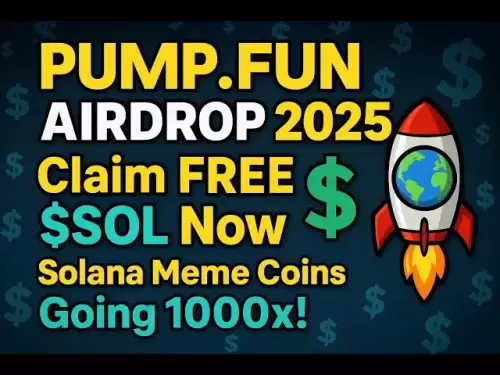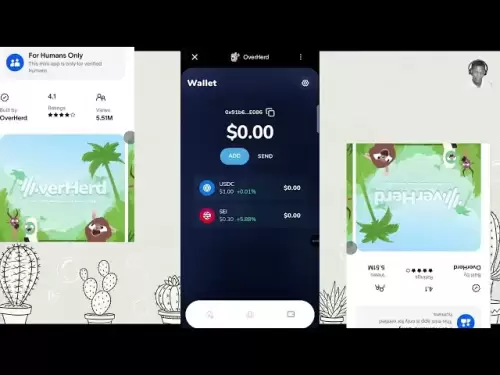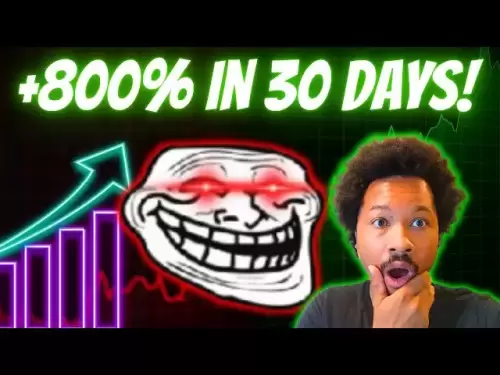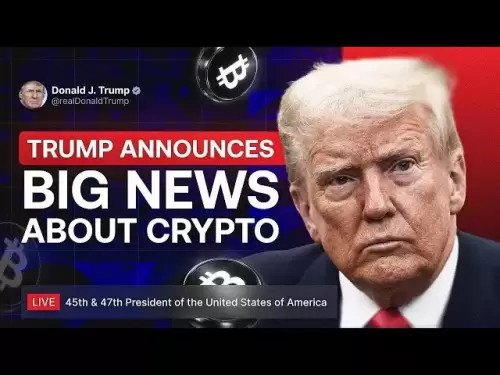-
 Bitcoin
Bitcoin $114200
-0.03% -
 Ethereum
Ethereum $3649
-0.25% -
 XRP
XRP $2.963
-2.31% -
 Tether USDt
Tether USDt $0.9997
-0.02% -
 BNB
BNB $761.0
-0.17% -
 Solana
Solana $164.6
-2.06% -
 USDC
USDC $0.9997
-0.02% -
 TRON
TRON $0.3321
-0.45% -
 Dogecoin
Dogecoin $0.2010
-2.49% -
 Cardano
Cardano $0.7282
-2.60% -
 Hyperliquid
Hyperliquid $37.56
-2.50% -
 Stellar
Stellar $0.3935
-3.18% -
 Sui
Sui $3.440
-1.36% -
 Chainlink
Chainlink $16.49
-1.80% -
 Bitcoin Cash
Bitcoin Cash $558.0
-1.38% -
 Hedera
Hedera $0.2407
-1.49% -
 Avalanche
Avalanche $22.27
-2.29% -
 Ethena USDe
Ethena USDe $1.001
0.00% -
 Litecoin
Litecoin $118.6
-4.00% -
 UNUS SED LEO
UNUS SED LEO $8.995
0.02% -
 Toncoin
Toncoin $3.190
-5.11% -
 Shiba Inu
Shiba Inu $0.00001214
-1.51% -
 Uniswap
Uniswap $9.655
-1.88% -
 Polkadot
Polkadot $3.638
-0.50% -
 Monero
Monero $292.1
-1.82% -
 Dai
Dai $1.000
-0.03% -
 Bitget Token
Bitget Token $4.312
-0.90% -
 Cronos
Cronos $0.1389
-0.32% -
 Pepe
Pepe $0.00001026
-2.44% -
 Aave
Aave $258.2
-1.12%
What is The Graph? How does it index blockchain data?
The Graph is a decentralized protocol using GraphQL to index and query blockchain data, simplifying dApp development by providing efficient access to complex blockchain information via its network of indexers, curators, and delegators.
Mar 02, 2025 at 06:00 pm
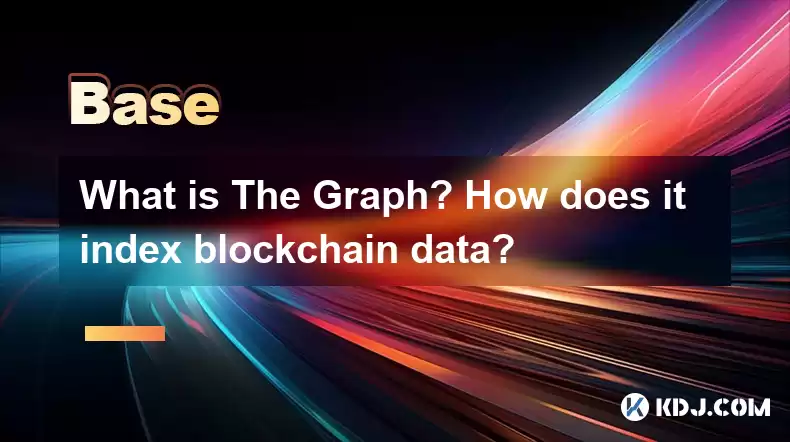
Key Points:
- The Graph is a decentralized indexing protocol that allows developers to easily query blockchain data using GraphQL.
- It indexes data from various blockchains, making it readily accessible for applications.
- The Graph uses indexers, curators, and delegators to maintain a reliable and efficient indexing network.
- Indexing involves fetching, processing, and storing blockchain data in a structured format.
- Querying data is done via GraphQL, a flexible query language.
What is The Graph?
The Graph is a decentralized protocol for querying and indexing blockchain data. It acts as a middleware layer, simplifying access to complex blockchain information. Instead of directly interacting with the often-complex blockchain itself, developers use The Graph's API to retrieve data efficiently. This makes it significantly easier to build decentralized applications (dApps) that require accessing and utilizing blockchain data. Think of it as a search engine specifically designed for blockchains.
How does The Graph index blockchain data?
The Graph's indexing process involves several key components working together. It's not a simple single-step process, but rather a distributed and collaborative effort. The process begins with the creation of a Subgraph, which is a description of the data to be indexed. This description is written in GraphQL Schema Definition Language (SDL). This specifies exactly what data from the blockchain needs to be collected and how it should be organized.
- Subgraph Creation: A developer defines which data they need from a specific blockchain using the GraphQL SDL. This detailed specification acts as a blueprint for the indexing process.
- Indexing: Once the Subgraph is defined, Indexers step in. These are nodes that run the software to fetch and process the data based on the Subgraph's description. Indexers download the relevant blockchain data, transform it into a usable format, and store it in a database. This is the core of the indexing process.
- Data Storage & Organization: The indexed data is then stored in a way that allows for efficient querying. The Graph utilizes its own optimized storage mechanism to provide fast and reliable access.
- Data Validation: The Graph utilizes a curation system to ensure the quality and reliability of the indexed data. Curators review and rate Subgraphs, ensuring data accuracy. This system helps maintain the integrity of the entire network.
What are Subgraphs?
Subgraphs are the core of The Graph's functionality. They act as customized data indexes for specific blockchains and contracts. A Subgraph describes which data to index from a specific blockchain, how it should be structured, and how to access it. They are created by developers who want to make specific blockchain data easily accessible through GraphQL queries. Think of them as individually tailored search indexes for specific aspects of a blockchain.
Who are the Key Actors in The Graph Ecosystem?
The Graph ecosystem relies on the collaboration of several key actors:
- Indexers: These are individuals or organizations that run the infrastructure to fetch, process, and store indexed blockchain data. They are rewarded for their contribution to the network.
- Curators: These users evaluate the quality and accuracy of Subgraphs. They signal which Subgraphs are reliable and deserve to be prioritized. Their ratings influence the allocation of indexing resources.
- Delegators: These participants stake GRT tokens to support Indexers. They earn rewards based on the performance of the Indexers they delegate to. This system provides incentives for participation and ensures network security.
How does GraphQL fit into The Graph?
GraphQL is a query language for APIs. It's a powerful tool that allows developers to specify exactly what data they need from a Subgraph, without retrieving unnecessary information. This makes it highly efficient and reduces network load. The Graph uses GraphQL to provide a user-friendly interface for querying the indexed blockchain data. It provides a flexible and efficient way to interact with the indexed data. Developers write queries in GraphQL to fetch specific data points from the indexed blockchain.
What are the benefits of using The Graph?
Using The Graph offers several significant advantages for developers:
- Simplified Data Access: It dramatically simplifies accessing and querying blockchain data, eliminating the need for complex interactions with the blockchain itself.
- Improved Efficiency: GraphQL's targeted queries ensure only necessary data is retrieved, improving efficiency and reducing network congestion.
- Scalability: The decentralized nature of The Graph enables scalability, handling large amounts of data and queries efficiently.
- Open Source: The Graph is an open-source project, fostering community development and transparency.
- Decentralization: It is a decentralized protocol, mitigating the risks associated with centralized data sources.
Frequently Asked Questions:
Q: What is GRT?
A: GRT is the native token of The Graph network. It is used for staking, rewarding indexers, and curators, and incentivizes network participation.
Q: How secure is The Graph?
A: The Graph's decentralized nature and reliance on a network of indexers and curators enhances its security. However, like any decentralized system, it's susceptible to vulnerabilities. Security audits and community participation help mitigate risks.
Q: Can I index data from any blockchain?
A: The Graph currently supports indexing from various popular blockchains. However, support for specific blockchains might vary, and adding support for new blockchains is an ongoing process.
Q: How much does it cost to use The Graph?
A: The cost of using The Graph depends on factors like query complexity and data usage. While the protocol itself is decentralized, indexers may charge fees for providing indexing and querying services.
Q: Is The Graph suitable for all dApp developers?
A: The Graph is particularly beneficial for dApp developers requiring efficient and reliable access to blockchain data. It might not be necessary for all dApps, especially those with simple data requirements.
Disclaimer:info@kdj.com
The information provided is not trading advice. kdj.com does not assume any responsibility for any investments made based on the information provided in this article. Cryptocurrencies are highly volatile and it is highly recommended that you invest with caution after thorough research!
If you believe that the content used on this website infringes your copyright, please contact us immediately (info@kdj.com) and we will delete it promptly.
- Coinbase, Financing, and the Crypto Market: Navigating Choppy Waters in NYC Style
- 2025-08-06 12:50:11
- Bitcoin in Indonesia: Crypto Education and Economic Strategy
- 2025-08-06 12:50:11
- DeriW Mainnet: Zero Gas Fees Revolutionize On-Chain Derivatives Trading
- 2025-08-06 10:30:11
- IOTA, Cloud Mining, and Eco-Friendly Crypto: A New York Investor's Take
- 2025-08-06 10:30:11
- Kaspa (KAS) Price Prediction: August 6 - Will It Break Free?
- 2025-08-06 10:50:12
- Pension Funds, Bitcoin ETFs, and Exposure: A New Era of Institutional Crypto Adoption
- 2025-08-06 12:55:12
Related knowledge

What is the difference between CeFi and DeFi?
Jul 22,2025 at 12:28am
Understanding CeFi and DeFiIn the world of cryptocurrency, CeFi (Centralized Finance) and DeFi (Decentralized Finance) represent two distinct financia...

How to qualify for potential crypto airdrops?
Jul 23,2025 at 06:49am
Understanding What Crypto Airdrops AreCrypto airdrops refer to the distribution of free tokens or coins to a large number of wallet addresses, often u...

What is a crypto "airdrop farmer"?
Jul 24,2025 at 10:22pm
Understanding the Role of a Crypto 'Airdrop Farmer'A crypto 'airdrop farmer' refers to an individual who actively participates in cryptocurrency airdr...

What is the difference between a sidechain and a Layer 2?
Jul 20,2025 at 11:35pm
Understanding the Concept of SidechainsA sidechain is a separate blockchain that runs parallel to the main blockchain, typically the mainnet of a cryp...

What is the Inter-Blockchain Communication Protocol (IBC)?
Jul 19,2025 at 10:43am
Understanding the Inter-Blockchain Communication Protocol (IBC)The Inter-Blockchain Communication Protocol (IBC) is a cross-chain communication protoc...

How does sharding improve scalability?
Jul 20,2025 at 01:21am
Understanding Sharding in BlockchainSharding is a database partitioning technique that is increasingly being adopted in blockchain technology to enhan...

What is the difference between CeFi and DeFi?
Jul 22,2025 at 12:28am
Understanding CeFi and DeFiIn the world of cryptocurrency, CeFi (Centralized Finance) and DeFi (Decentralized Finance) represent two distinct financia...

How to qualify for potential crypto airdrops?
Jul 23,2025 at 06:49am
Understanding What Crypto Airdrops AreCrypto airdrops refer to the distribution of free tokens or coins to a large number of wallet addresses, often u...

What is a crypto "airdrop farmer"?
Jul 24,2025 at 10:22pm
Understanding the Role of a Crypto 'Airdrop Farmer'A crypto 'airdrop farmer' refers to an individual who actively participates in cryptocurrency airdr...

What is the difference between a sidechain and a Layer 2?
Jul 20,2025 at 11:35pm
Understanding the Concept of SidechainsA sidechain is a separate blockchain that runs parallel to the main blockchain, typically the mainnet of a cryp...

What is the Inter-Blockchain Communication Protocol (IBC)?
Jul 19,2025 at 10:43am
Understanding the Inter-Blockchain Communication Protocol (IBC)The Inter-Blockchain Communication Protocol (IBC) is a cross-chain communication protoc...

How does sharding improve scalability?
Jul 20,2025 at 01:21am
Understanding Sharding in BlockchainSharding is a database partitioning technique that is increasingly being adopted in blockchain technology to enhan...
See all articles





















